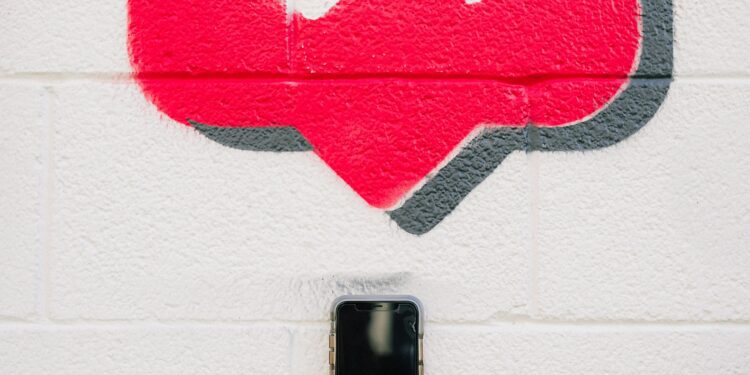A tide of healthcare clips streams unceasingly on smartphones, offering patients bite-sized advice, procedural glimpses, and personal testimonials with the tap of a finger. Such videos command attention not merely by convenience but by activating deep-rooted trust mechanisms shaped by philosophy, neurobiology, and evolutionary pressures.
Philosophical Foundations of Trust
David Hume argued that human belief rests on habit rather than logical certainty. In his “Enquiry Concerning Human Understanding” Hume maintained that we forge expectations by observing repeated associations. When a patient watches a nurse demonstrate wound care multiple times on social media, the mind registers a pattern: caring posture, precise movements, consistent outcomes. Habitual exposure supplants formal credentials in engendering confidence.
Sir William Osler, the esteemed physician, proclaimed that listening represents half the art of medicine. In his collected “Aequanimitas” lectures, Osler emphasised bedside manner and genuine empathy as bulwarks of patient trust. Social-media videos mimic that rapport by showcasing unfiltered practitioner voices, candid patient interactions, and spontaneous explanations. The medium’s informal register echoes Osler’s insistence that clinicians must humanise science.
Ralph Waldo Emerson extolled self-reliance in his eponymous essay, advocating that individuals trust their intuition above external authority. Viewers of health videos relish the empowerment of interpreting medical advice on their own terms. Emersonian autonomy reinforces the appeal of on-demand expertise that bypasses institutional gatekeepers. When patients admire a physician’s succinct tutorial on insulin injection, they affirm their capacity to translate instruction into action.
Neuroscience of Video-Based Trust
Modern imaging illuminates the neural substrates of social learning and trust. Studies using functional MRI reveal that observing another’s actions activates mirror-neuron networks in the premotor cortex, enabling vicarious skill acquisition. A landmark Nature Neuroscience study demonstrated that participants who watched an expert perform a task showed comparable brain-activation patterns to those executing the task themselves. Health videos exploit that circuitry, allowing patients to internalise procedural knowledge through observation alone.
Oxytocin, often dubbed the “trust hormone,” modulates social bonding. A randomized trial published in Psychoneuroendocrinology found that intranasal oxytocin increased participants’ willingness to rely on advice from strangers. Social-media influencers who share healthcare experiences—complete with authentic emotion and direct eye contact—tend to elicit oxytocinergic responses, lowering skepticism and fostering openness to guidance.
The amygdala and insular cortex integrate emotional salience and risk assessment. When a video recounts a patient’s journey through chemotherapy, viewers experience affective resonance that enables cognitive appraisal of treatment benefits and harms. By coupling narrative poignancy with factual details, creators circumvent abstract statistics and instead engage emotion-driven neural pathways that underpin trust.
Evolutionary Perspectives on Credibility
Evolutionary psychology posits that human survival depended on selective social learning. Anthropologists propose that early hominins observed skilled hunters and foragers, imitating successful strategies to enhance group fitness. The Social Learning Theory outlines mechanisms for such imitation, including attention to prestige cues—signals of competence and status. In modern social media, professional titles, lab coats, and polished thumbnails operate as prestige markers that prime viewers to heed content.
Reciprocal altruism theory suggests that trust evolved to facilitate cooperative exchanges. When clinicians share free educational videos, viewers feel a sense of reciprocity: they grant attention and engagement in return. Even brief acknowledgements—likes, comments, shares—complete a trust circuit reminiscent of ancestral gift exchanges.
Group-selection arguments further illuminate the phenomenon. Communities that adopted reliable health behaviors—through observing trusted informants—enjoyed survival advantages. Today’s social-media health groups replicate that communal dynamic, with moderators enforcing evidence-based norms and discouraging misinformation. Cohesive digital tribes reinforce trust by penalizing deviant content and rewarding accurate contributions.
Intersecting Dimensions: Why Videos Resonate
Patients perceive video content as authentic for several interlinked reasons. Philosophically, repeated exposure and empathetic tone echo Hume and Osler. Neurologically, mirror-neurons and oxytocin pathways transform passive viewing into embodied learning. Evolutionarily, prestige signals and reciprocal frameworks align with ingrained social-learning instincts.
Moreover, videos condense complex material into digestible segments. High-resolution visuals clarify anatomical detail, narrated scripts distill jargon, and on-screen captions accommodate diverse learning styles. These multimodal features engage visual, auditory, and linguistic networks in concert, maximizing retention and reducing cognitive load. The result is not just convenience but neurological efficiency.
Implications for Clinical Practice
Clinicians and health systems can harness these insights to extend patient education. Producing short, empathic videos that demonstrate common procedures—such as inhaler technique or insulin preparation—can reinforce in-office instruction. Embedding subtle prestige cues, such as credentials in video descriptions, enhances credibility. Encouraging patient authorship of testimonial videos fosters peer learning and trust reciprocity.
However, clinical stakeholders must remain vigilant against potential risks. Overreliance on informal videos may erode deference to professional judgment. Inaccurate or out-of-context content can propagate misconceptions. Platforms should implement rigorous verification labels, linking creators with institutional affiliations or peer-review endorsements.
Toward a Framework of Digital Trust
A robust model for video-based healthcare trust requires synergy among philosophical, neurological, and evolutionary considerations. From Hume, we accept that repeated, consistent messaging builds expectation. From Osler, we recognize that empathy and authenticity matter as much as information. From Emerson, we appreciate patient autonomy and self-reliance. Neuroscience teaches us that our brains are wired to learn socially and bond through biochemical pathways. Evolutionary theory reminds us that prestige and reciprocity remain potent motivators.
Integrating these strands suggests best practices: deliver concise, consistent content; foreground genuine clinician–patient interactions; display appropriate expertise cues; and foster community engagement that rewards accuracy and courtesy. Platforms should verify credentials, track video accuracy rates, and flag content that deviates from evidence-based norms.
Conclusion
The magnetic appeal of social-media health videos lies in their confluence of deep-seated trust mechanisms. By aligning philosophical tenets of belief, neurobiological circuits of empathy, and evolutionary strategies of social learning, these clips transform casual scrolling into active patient engagement. As healthcare continues its digital migration, understanding the roots of trust will prove essential in crafting content that informs, empowers, and safeguards patient welfare.















